Lafayette El
Narrative written by Ann de Forest
Photos by Dave Tavani
Flags of four nations hang in the second floor bay window of Lafayette El’s house on N. 40th Street in West Philadelphia. The American flag, with its stars and stripes, represents Lafayette’s birthplace. Jamaica’s bold black, green, and gold stand for his wife Tatelin’s homeland. Morocco’s flag — red with a green five pointed star – shows where Lafayette’s great grandfather was born, while Liberia — red, white, and blue with a single star – is where his family members migrated in early 20th century, joining a mass movement of former slaves and their descendants reclaiming their African roots.
Lafayette, 89 years old, was born in upstate Pennsylvania, not far from the Ohio border. He grew up in a multi-ethnic community of African Americans and immigrants from Czechoslovakia, Italy, and Poland, all drawn to the rural hill country by the promise of work in the steel mills. The Czechs, he remembers, lived in tents, as if they were simply camping out and expected their stay to be temporary. His grandfather, though, part of the Great Migration of blacks who came north from the rural south in search of work, built a homestead and farm that became the community’s centerpiece. The wives of the factory workers who came from the south helped work the farm. Lafayette’s grandmother, he remembers, would bring a truckload of produce to sell at the gates of the steel mill, then swing by the railyards in Wheatland where Lafayette would help load the truck with coal that had fallen from the passing trains.
“It was beautiful, Lafayette reminisces in his raspy whisper (surgery a few years scarred his vocal chords). “Everybody looked out for everybody’s kids… Those steel mill people worked together. There were no prejudices. We all stuck together.”
With his white beard and denim overalls, Lafayette could pass for a farmer today. But all that growing on his narrow Philadelphia sidewalk is a fragrant blend of mint, thyme, and sage, mixed in with bright flowers, on two square garden patches contained in a wooden frame. Tatelin, who considers herself a country girl at heart, grows raspberries in the backyard. One of her favorite possessions is a painting that shows the simple life she remembers from her childhood in Jamaica, a child walking in high yellow grass by a raised wooden shack and a shady tree.
Though their roots are rural, the Els have lived in their two interconnected rowhouses in Philadelphia for more than 40 years. Lafayette first discovered Philadelphia when he was recuperating from a parachuting accident at a military hospital in Valley Forge. He had joined the army at 17 and served in the Special Forces as a paratrooper. “It was a real rough outfit …the 82nd airborne…” He points to the insignia on his black baseball cap. “I was in Vietnam but don’t ask me nothing about that.” He and his army buddies would come into the city to party, he says. Back then 40th and Market was the pulsing heart of West Philly’s nightlife, and the neighborhood, known as Black Bottom, was a jazz mecca. Billie Holiday sang at the Powelton Hotel and Bar at the corner of 40th and Filbert (the same building, where, earlier in the century Albert C. Barnes manufactured the patent medicine that made him a wealthy man), right next door to where Lafayette lives now.
After he was discharged, Lafayette went back home to Western Pennsylvania. But Philly called. “I said, ‘hmmm, I like Philadelphia.’ I came up for the weekend, and I never came back.”
A construction job on 40th Street brought him back to his old haunts. But the once vibrant neighborhood had vanished. In the early 1970s, the University of Pennsylvania razed West Philadelphia’s Black Bottom to build the University Science Center, a string of research and development facilities, along the spine of Market Street.
The western end of the development was designated for low-income housing, to replace, in part, the blocks of demolished homes. Lafayette was helping build Center Post Village Apartments, a housing complex for the elderly, when he spotted the rowhouses across the street for sale. The national AME church owned the entire block, and had planned to demolish the rows, including the historic Hotel Powelton, to build more HUD-funded housing. When the government program ended, the church lost its funding and abandoned the project. The church’s loss was Lafayette’s gain.
That was 1974. The west side of 40th Street survives nearly intact today, a line of 19th century structures shadowed by large-scale urban renewal projects of the 1970s to the south and east. Most of the three-story Victorian rowhouses and twins have been modified, expanded, and subdivided into apartments, currently home to a transient population of students from nearby Drexel and Penn. The Els’ two connected rows and their next-door neighbor’s grand stone twin are the only homes on the block occupied by their owners.
The block is thriving compared to when Lafayette first bought his properties. “It was the wild west. While I was working on this house, people were breaking in and stealing my stuff. I moved down here and fixed up one and I stayed here, so I could watch.”
Even worse was the impact of the crack epidemic of the late 1980s. Lafayette and Tatelin remember walking down to McDonald’s on Walnut Street one night to grab a bite. They came back half an hour later to find that someone had broken in and stolen their brand new, yet-to-be-installed kitchen counters and cabinets. “They’d steal anything that wasn’t nailed down,” says Lafayette.
Addiction destroyed the fabric of the neighborhood. Parents of Lafayette’s generation held on to their property to pass on to their children. Lafayette himself has bought houses for all 17 of his children. In the 80’s, he saw many families ruined as children squandered their inheritance. Their homes, turned into crack houses, then neglected and abandoned fell apart too. “They went on crack. They couldn’t get jobs. They couldn’t pay the taxes.” Crack’s impact still reverberates in West Powelton today.
Lafayette and Tatelin stayed and made their home on 40th Street. Tatelin, who doesn’t drive, walked or took the El to her job at the Philadelphia Stock Exchange. Lafayette ran a successful roofing business, working for clients all over the city and beyond, from the Painted Bride to Kenny Gamble.
Lafayette had his hip replaced in 2005, and the Philadelphia Stock Exchange shut down in 2009, in the aftermath of the financial crisis. Tatelin, who had worked there since high school, received a generous severance. They decided it was time to return to country living. Lafayette retired to go back home.
Except home was nothing like he remembered. Lafayette knew that a tornado had flattened the town of Sharon, Pennsylvania in 1985. He had attended a memorial service, and had returned many times to visit relatives But he wasn’t prepared for the ravaging effects of the economic recession. “The town was torn down,” says Lafayette. “They used to have movie theaters, we had all the stores. They tore it all down and built a mall.” And the mall was failing. “Nobody had money. Everybody lived on Section 8. There was no work, and what little work there was paid $7.2 5 an hour.”
“I hate that place,” says Tatelin matter-of-factly. “I thought I would like it.” The people were mean, she says. Kids threw rocks at their house. And the winter stretched on and on. “It snowed like crazy…and they don’t shovel their sidewalks. They just walk in it.”
So they came home – not to their birthplace or native land, but back to the rowhouses they had knitted into a home together, where a tapestry of a young Bob Marley shares space in their living room with family photographs, carved African animals, photos of John Coltrane and Louis Armstrong and a montage honoring “Sons of Africa,” including Malcolm X and Martin Luther King Jr. And though they feel Penn and Drexel’s expanding and squeezing against their block from both sides, though the sound of helicopters landing in the parking lot of Penn’s new trauma center triggers long buried war memories for Lafayette, and though the students who now dominate the block have too many cars and don’t clean up after their dogs, Lafayette and Tatelin returned to a neighborhood looking much better than when they had left it.
Tatelin and their next door neighbor Tara chat together across the fence while Tara hangs out her wash, and together they planted the herb and flower gardens to brighten the sidewalk.
In Lafayette’s home town, says Tatelin, “People talk, talk, talk. Everybody knows your business. In Philly, you live around people, you still got your privacy.”
And luscious red raspberries too. “Look at these beauties that we grow in your yard,” says Tatelin, and she passes around a blue china bowl filled with just-harvested fruit.

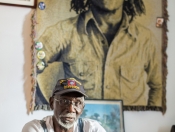


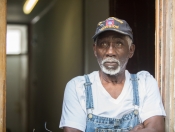
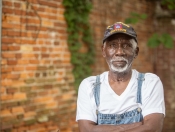
 Emi and Afaq Mahmoud
Emi and Afaq Mahmoud 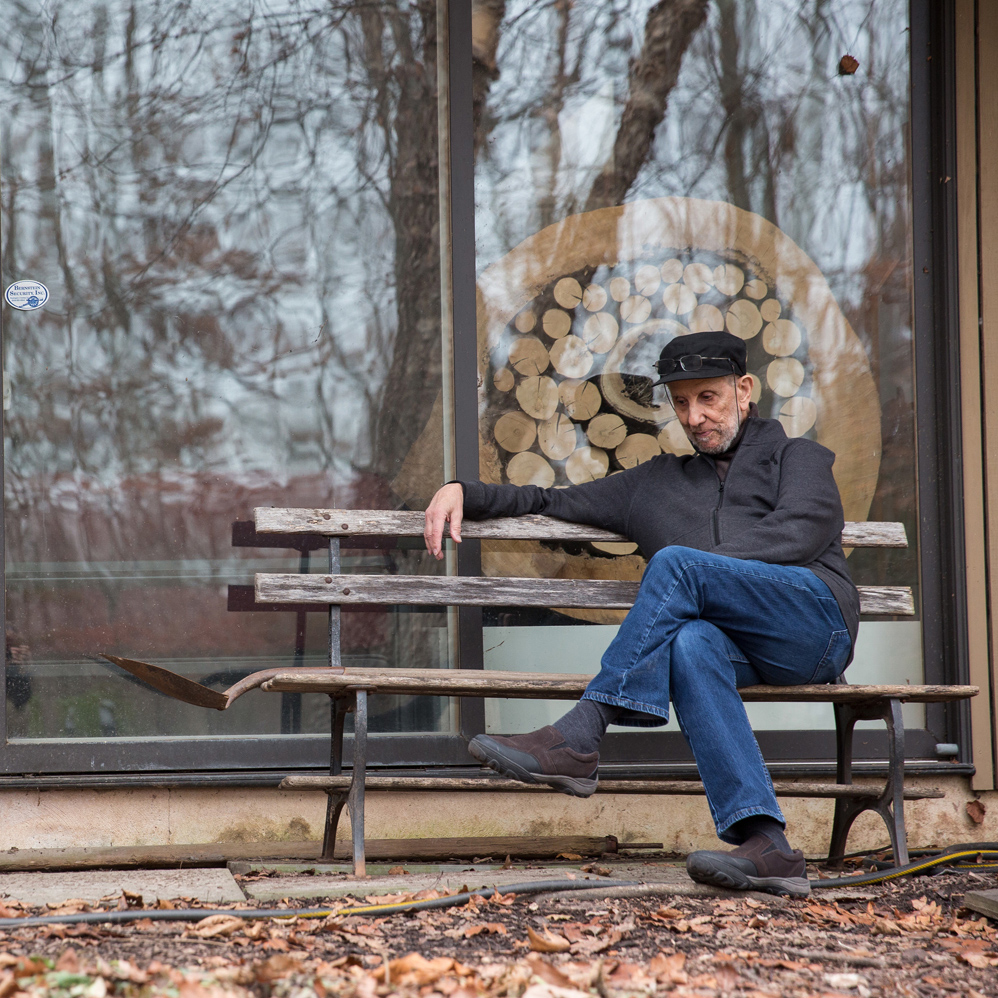 Rajie Cook
Rajie Cook 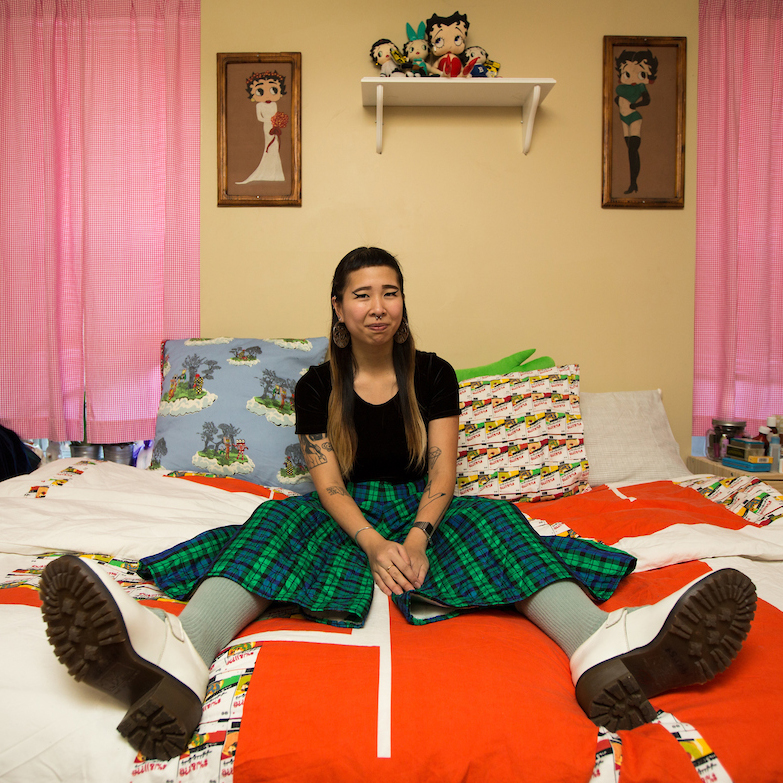 Cocoa Mahoney
Cocoa Mahoney 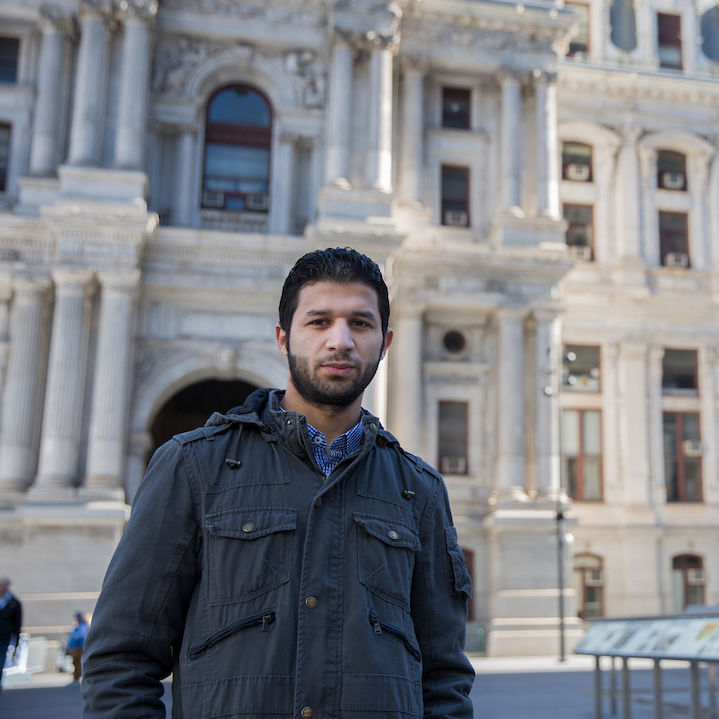 Yasser Allaham
Yasser Allaham 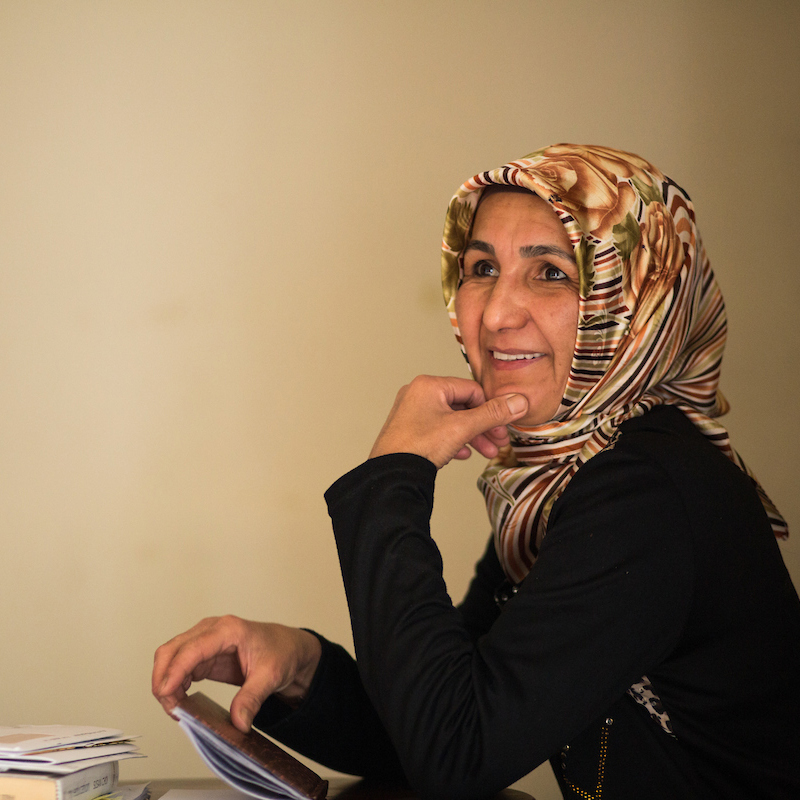 Gulnora Ravshan
Gulnora Ravshan  “Floating Outsider”
“Floating Outsider” 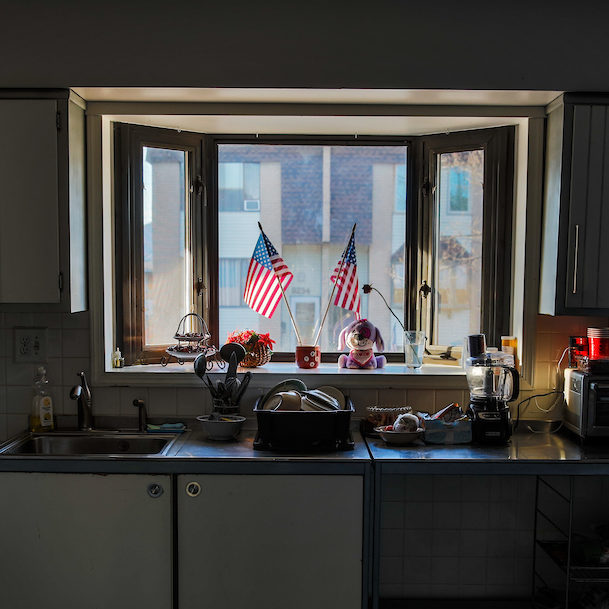 “Ahmad” & “Zainab”
“Ahmad” & “Zainab” 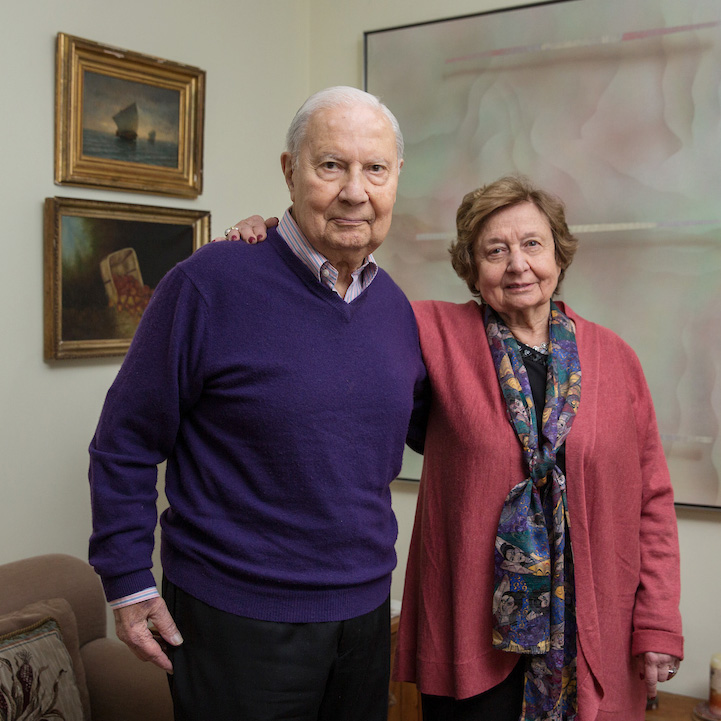 Jack and Gloris Dunnous
Jack and Gloris Dunnous  Maria Turcios
Maria Turcios  Tara O’Brien
Tara O’Brien  Sophia Simpson
Sophia Simpson